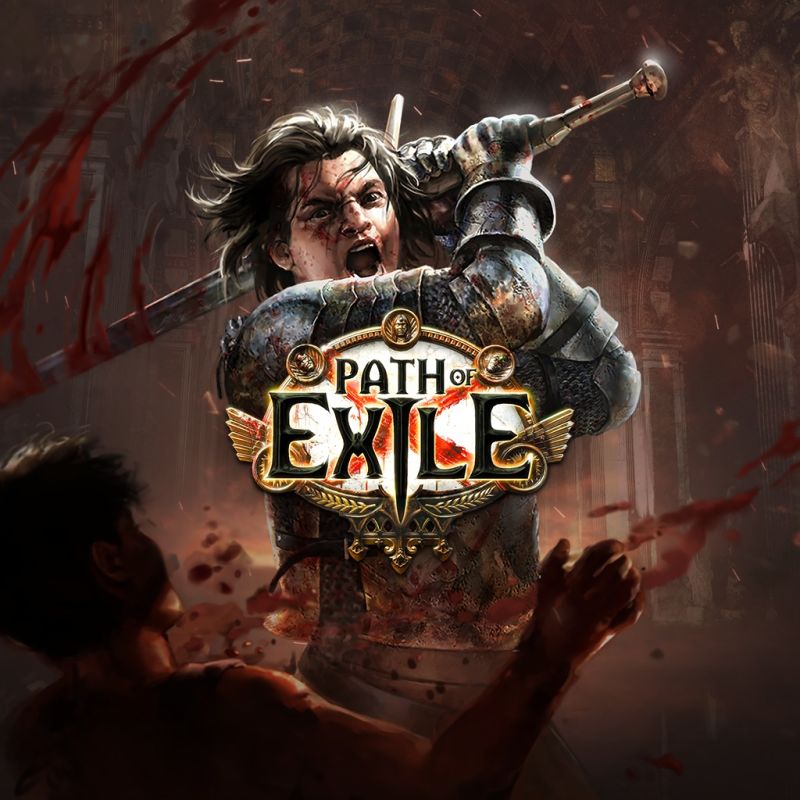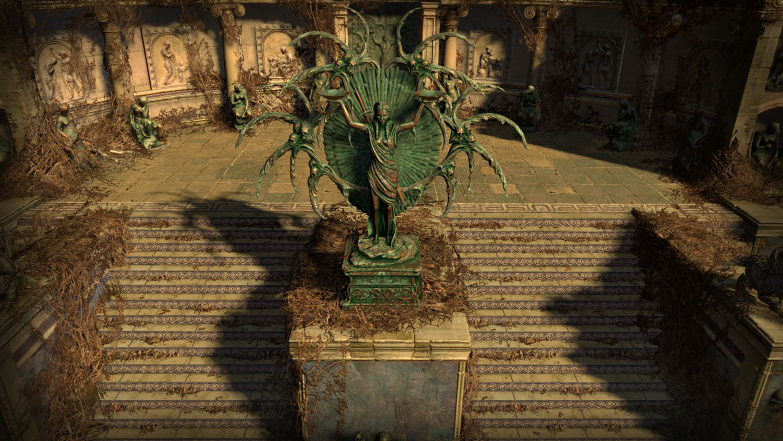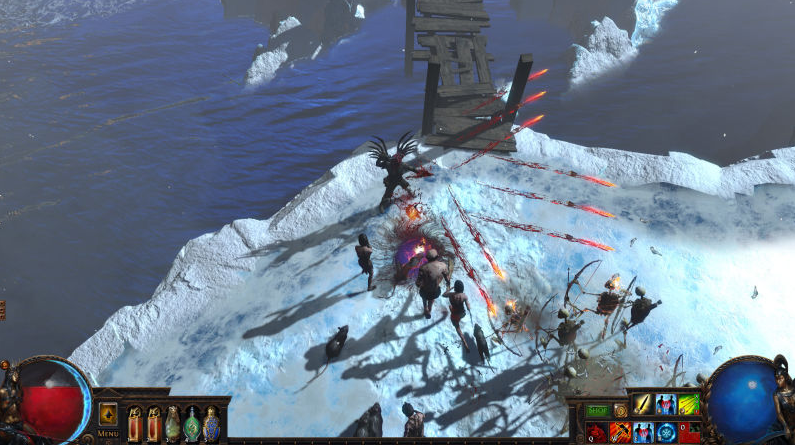When a criminal of Oriath has committed a crime so heinous, or proven themselves so dangerous, that they will be unable to find their redemption in prison they are sentenced to exile on the dead continent of Wraeclast. Once a thriving empire centuries ago, Wraeclast fell into ruin in an hour; its people warped by blood magic and its bowels spitting up monsters. Only exiles, and treasure hunters drawn by stories of the region’s magical gems, go to Wraeclast now, and no one ever returns.
Path of Exile is a role-playing game with action combat; Diablo style.To do so, the player either clicks on enemies with the standard attack or uses special attacks which require mana. After all enemies are down – if necessary, the player uses potions (which automatically fill up when killing enemies) to refresh up health, mana or other bonuses – the rewards are experience points and loot which may be equipped to improve the character’s statistics. The next step is to visit the hub area, use vendors to get rid of unnecessary loot and speak with people for the next main or side quest which requires the death of a lot of monsters.
The game tries to separate itself from contemporary competition like Diablo III with a complex skill system. Each level up rewards a point to use on the passive skill tree with about 1350 entries – the chosen class (among seven) only changes the starting point; otherwise development is free. Those skills influence the character’s statistics, resistances, weapon proficiencies, attack speed, etc. Active skills are gained by slotting skill gems into equipment sockets, provided the character has the minimum stat points needed. Socket and gem color have to be identical, but on the other hand gems can be removed without penalty. Another kind of gems are support gems grant a bonus to any skills their slot is linked to on a single piece of equipment. Gems level up from experience as well. Orbs, the game’s currency, can also be used to upgrade weapons with random results.
Combat areas in the game are instanced, and players will only see other random players in hub areas. If desired, players can join up to play the campaign together or participate in competitive modes (deathmatch, team deathmatch, capture the flag). Leagues segregate characters, with the two most common being Standard (no additional rules) and Hardcore (Dying turns the character into a Standard league character with no way to return). Temporary leagues include races, where the goal is to accrue as many experience points from a fresh character in set amount of time, and challenges, where the standard game world has been influenced with new enemy types or events.
Path of Exile is a free-to-play game and supports itself with an in-game shop where players can buy items with real money. With a few exceptions (bigger off-character storage and more character slots), the offers are purely cosmetic. Paid leagues were offered in the past.
As a free, online game Path of Exile has received numerous substantial updates to the core game over the years. Patch 1.1 added Vaal dungeons: randomly appearing side areas that have difficulty bonuses in the same way that magic items have stat affixs, and which can be altered by orbs before entering like equipment as well. Inside these dungeons special corrupt skill gems can be found which have vastly increased power, but can only be used after being charged with the souls of foes. Patch 1.2 introduced Masters, new vendors who appear while out in the wilds with quests tailored to each specific Master. As quests are completed their inventory grows, and they will invite the player to create a hideaway for themselves that can be decorated.
Patch 2.0 added a fourth act to the game, allowing the Exile to finally slay the blight over Wraeclast for good. Also added were new gems that could be slotted into the passive skill tree for unique bonuses. Patch 2.2 opened the Trials of Ascendancy, special dungeon areas filled with more traps than monsters. By completing the trials, and the subsequent Labyrinth, the Exile will prove themselves to be worthy of being emperor, and more usefully unlock new passive skill trees. These new skill trees have potent powers based around three iconic designs for each class, but points for Ascendancy trees can only be gained from the Labyrinth. Patch 2.3 updated the old random map items that were part of end-game activities into the Atlas of Worlds: a map where the player places items to generate high level dungeons with the goal of fighting their way to the center of the map for a shot at slaying The Shaper.
Patch 3.0 added a fifth act, where the Exile finally returns to Oriath to pay the empire back for their imprisonment. As is par for course things become dramatically worse for the Exile’s actions, and they escape back to Wraeclast where small gods have moved in to fill the power vacuum that the Exile created. The game’s higher difficulty levels were removed with this update, with their rewards and difficulty now spread through acts 6-10. These acts take place in the same geographic locations as the game’s first five acts, but with new quests, monsters, and layouts. As the Exile adds deity notches to their belt they unlock access to new Pantheon powers, a collection of universal defensive passives that can be reassigned in any non-combat area.
Cover Art:
Screenshots:




